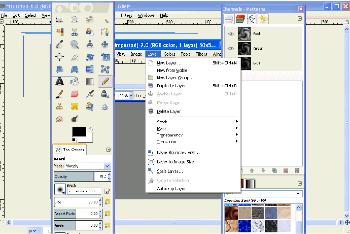
Of the two, Gimp has more to offer, but Pixelmator is generally better at what it does. Both feature all needs like layers, selection tools, text tools, filters, channels, brushes, window alternators, etc.

Of course, the two apps share many similarities.
GIMP FOR MAC OS REVIEW ANDROID
In this scenario, Gimp is Android camera and Pixelmator is the iPhone camera. Android had settings for brightness, exposure, digital zoom, filters and more, and still couldn’t compete. For a long time, the iPhone camera was widely regarded as the best on a smartphone, despite having virtually no customization options. I know these are small examples in two very capable applications, but the experience in various tools and filters is very consistent. Good rendering is especially important if you want to share or upload photos, as compression can distort an image even more. Gimp’s smudge tool is a pixelated mess, no matter what option I set, but his opponent was silky smooth. Yes, Gimp can have 20 different ways to blur all or part of an image, but Pixelmator still manages to produce a better result. Here’s the problem: Pixelmator has a tendency to outperform Gimp in almost every area anyway. Read Also: Fix ‘Photos App Crashing on Windows 10’ Issue Pixelmator is less than a pleasant experience for users who want complete control, instead of letting the application do the work. Drag outside the clicked point to adjust the tolerance for the surrounding area, but that is all you will get. The bucket / filler tool does exactly as advertised. Yes, there are other types of blur, but in addition to one or two sliders, this is all the adjustment you can use. You can adjust the intensity, but that’s it.

In Pixelmator, the Gaussian blur is the Gaussian blur. It’s easy to see how advanced photo editors and designers would have a field day. Even something as simple as the bucket / fill tool has fill types, affected area options, transparency options, modes, colors, patterns and limits to play with. It has not only Gaussian blur, it has a blur radius, horizontal and vertical, and a blur method. Gimp doesn’t just have a blur tool, it has six different types of blur. Believe it or not, for some people, especially the most demanding perfectionists among us, this can be useful.

Previously, I mentioned that Gimp looks like a random mashup of tools on your screen. Gimp is Feature-Packed, but Pixelmator tends to outperform


 0 kommentar(er)
0 kommentar(er)
